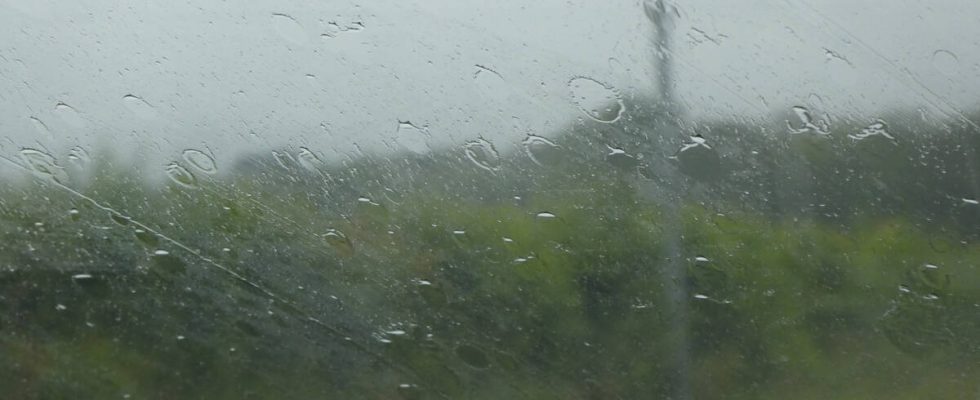In a previous article, we explained why the rainy episode that affects France is not incompatible with drought: in the spring period, rainwater is primarily captured by growing vegetation, slowing down the recharging of groundwater . A statement sometimes mocked by some commentators on social networks, insisting on the “rotten” month of May and highlighting the reports of several media ensuring that in several departments, like the Vendéemost of the water tables ended up being recharged, even “overflowing”.
If the bad weather which has showered part of the country in recent weeks has made it possible to make up for all or part of the delay in certain territories, the situation is far from being resolved elsewhere.
In which parts of the country is the situation still worrying? This May 17, the Bureau of Geological and Mining Research publishes a status report on May 1st, detailing the evolution over the whole month of April. Data which therefore does not take into account the effect of the last two weeks of bad weather.
We present here an evolution of the situation over one month, as of May 13. Release referred to data synthesized by the site Drought info (current groundwater levels according to observation stations spread over the territory) and communicated to the press at monthly intervals.
31 departments still have “low” or even “very low” average levels
As of May 13, 20 departments still had – on average – “very low” levels. These are (from north-west to south-east) Loir-et-Cher (41), Cher (18), Jura (39), Puy-de-Dôme (63), Loire ( 42), Haute-Loire (43), Isère (38), Lozère (48), Hautes-Alpes (05), Lot-et-Garonne (47), Gard (30) , Vaucluse (84), Alpes-de-Haute-Provence (04), Alpes-Maritimes (06), Gers (32), Haute Garonne (31), Hérault (34), Var (83), Aude (11) and Pyrénées-Orientales (66).
Eleven departments still have a “low level”: Nord (59), Yvelines (78), Orne (61), Sarthe (72), Indre-et-Loire (37), Haut-Rhin (68), Allier (03), Haute-Vienne (87), Drôme (26), Tarn (81) and Hautes-Pyrénées (65).
Twenty-six departments are at a “moderately low” level, 14 are close to the average, and 8 at a “moderately high” level. These are Ardennes (08), Meurthe-et-Moselle (54), Finistère (29), Côtes-d’Armor (22), Mayenne (53), Deux-Sèvres (79) and Vendee (85). If we focus on this last department, on 27 observation stations providing information on the state of 10 distinct aquifers, only two return less than average information.
The water tables are only considered “high” for four departments: Pas-de-Calais (62), Manche (50), Ille-et-Vilaine (35) and Morbihan (56).
Degraded situation in certain departments
If we compare the evolution of the state of groundwater over a month, we see that the situation has only moderately changed. For example, mid-April, March rains had already recharged the Breton aquifers.
If the situation has improved significantly in several departments (as in the Aisne, with a passage from “very low” to “moderately low”), the picture has darkened in others. By focusing on the departments which have fallen below the average or which, already below the average, have seen the situation evolve unfavorably, there are 11 cases: a change from “close to the average” to “moderately low” (the Doubs) , two from “close to average” to “low” (Haute-Vienne, Tarn-et-Garonne), four from “moderately low” to “low” (Yvelines, Indre-et-Loire, ‘Allier, Haut-Rhin); two from “moderately low” to “very low” (Gard, Hautes-Alpes) and two from “low” to “very low” (Lot-et-Garonne, Hérault). It should be noted that this deterioration in the situation does not necessarily reflect a drop in the absolute level of the groundwater, but an unfavorable change in the filling of these groundwater in one month (the indicator used giving the state of the groundwater compared to a average established over at least fifteen years – see methodological point below).
Methodology
To determine the state of a water table, we commonly use a standardized indicator which compares its level, on a given date, with reference values on the same date, established from data collected over at least fifteen years. Since they are established in relation to a reference average, the different levels given are associated with the rarity of the event. Thus, a water table whose level is qualified as “very low” (or very high) corresponds to a filling rate which is observed, at most, only once every ten years. The “low” and “high” levels correspond to a rate observed every five to ten years. “Moderate” levels refer to events observed every 2.5 to 5 years.
It should be noted that the problem can be posed either at the level of the departments (which makes sense from the point of view of the politico-administrative management of water crises), either at the watershed scale (i.e. geographical areas in which the waters converge towards the same watercourse (or the same groundwater table). The limits of these basins being little known to the general public, the information compiled will be presented here at the departmental level.
A department delimits several water tables, with information reported by several observation stations. Several observation stations that may correspond to the same aquifer. Moreover, in the same department, aquifers of very varied levels can coexist, but also observation stations for which data are unavailable. The infographics present, for each department, the most representative state of the stations for which the data are available. It should be noted that, for several departments of Ile-de-France, as well as in Eure-et-Loir, Haute-Savoie, Savoie, Ardèche, Lot, Aveyron, Pyrénées-Atlantiques and the ‘Ariège, the number of stations for which data are missing is too high to extrapolate which value is the most representative.
Finally, on the question of groundwater, there are significant hydrological disparities within the same department. For example, in Puy-de-Dôme, the Tour d’Auvergne observation station, in the south-west of the department, has a “high” filling level, while six other stations display a “high” level. very low”, and six others a “low” level. Finally, for the same aquifer, distinct observation stations can return discordant average information.

